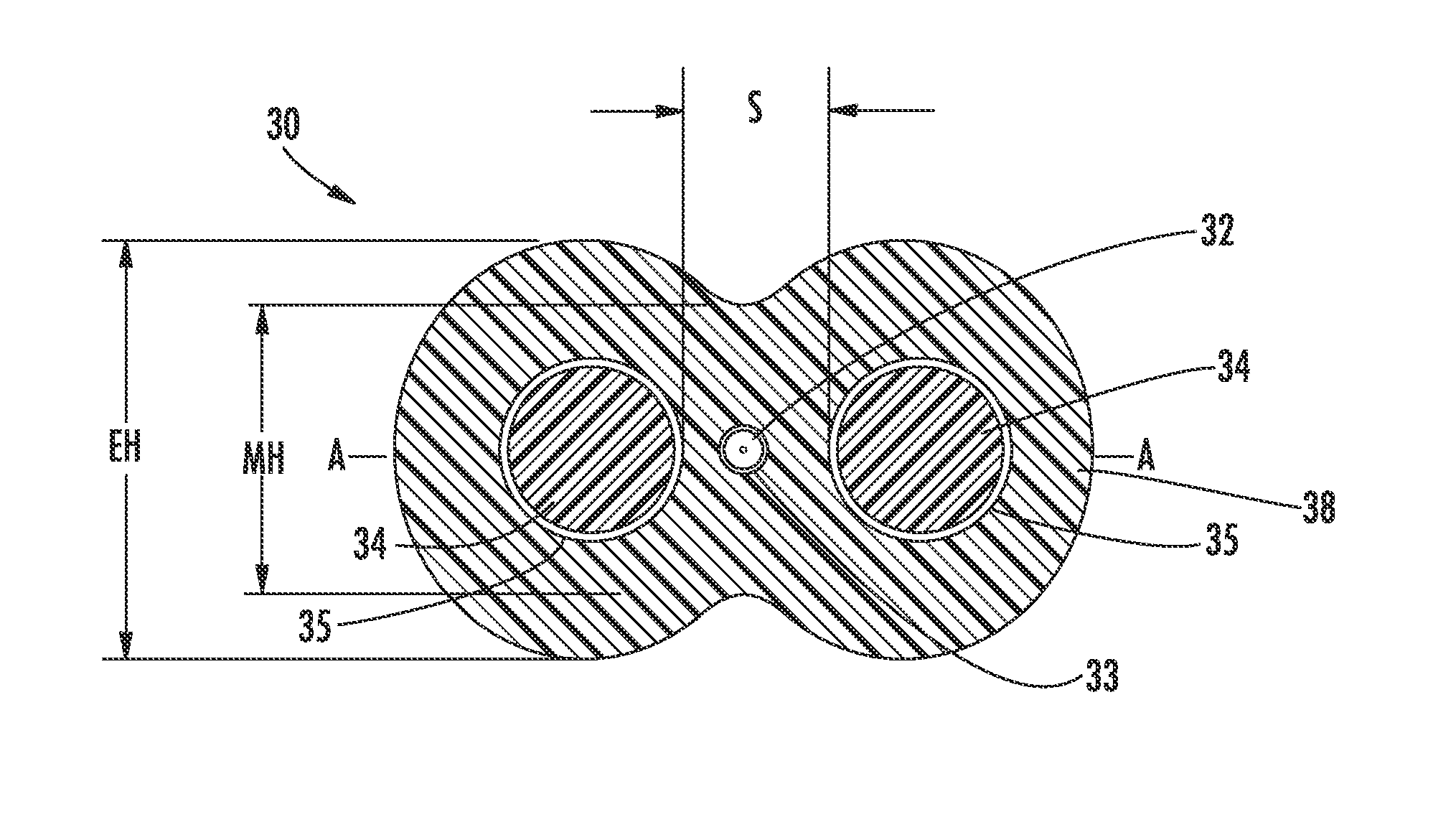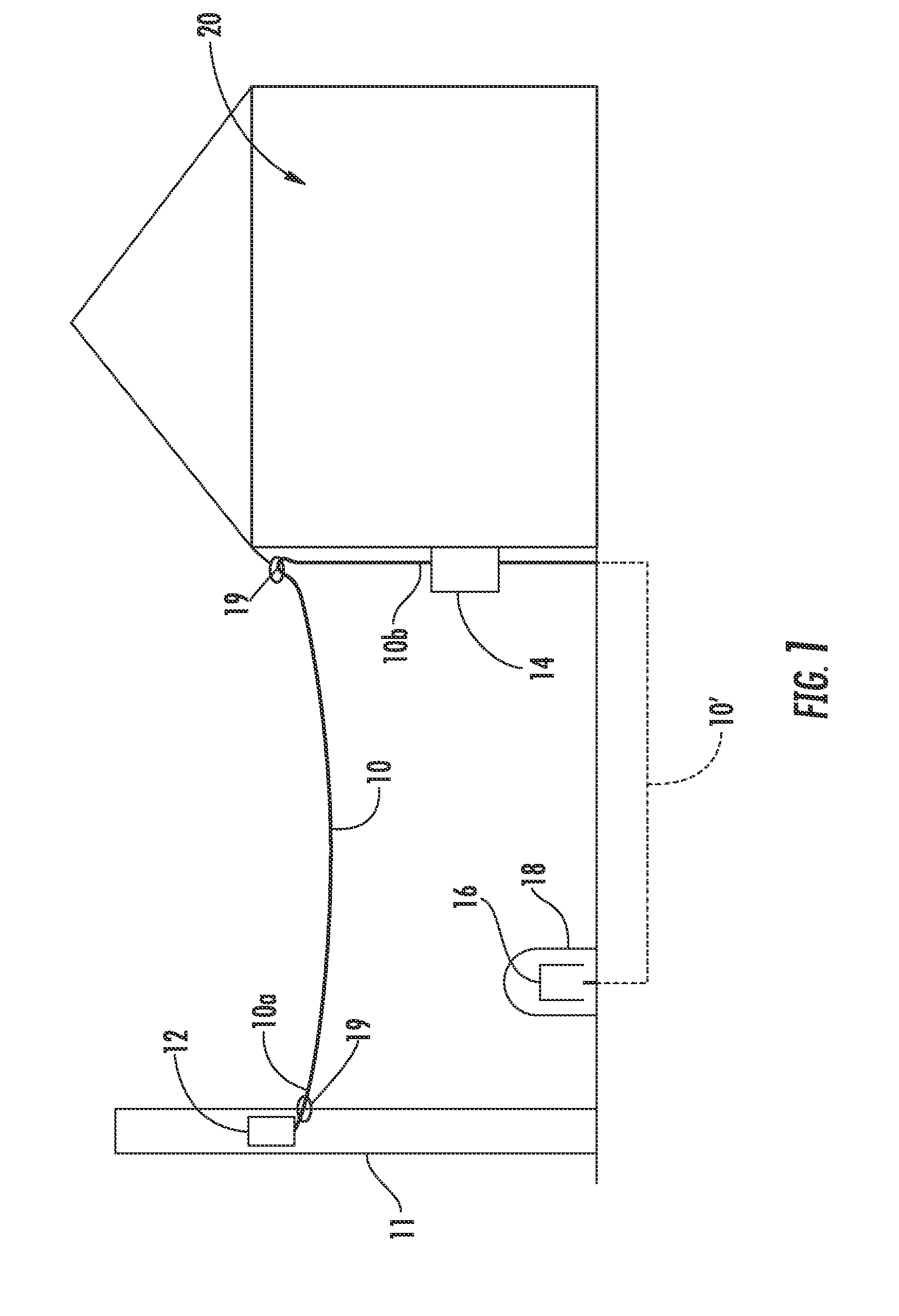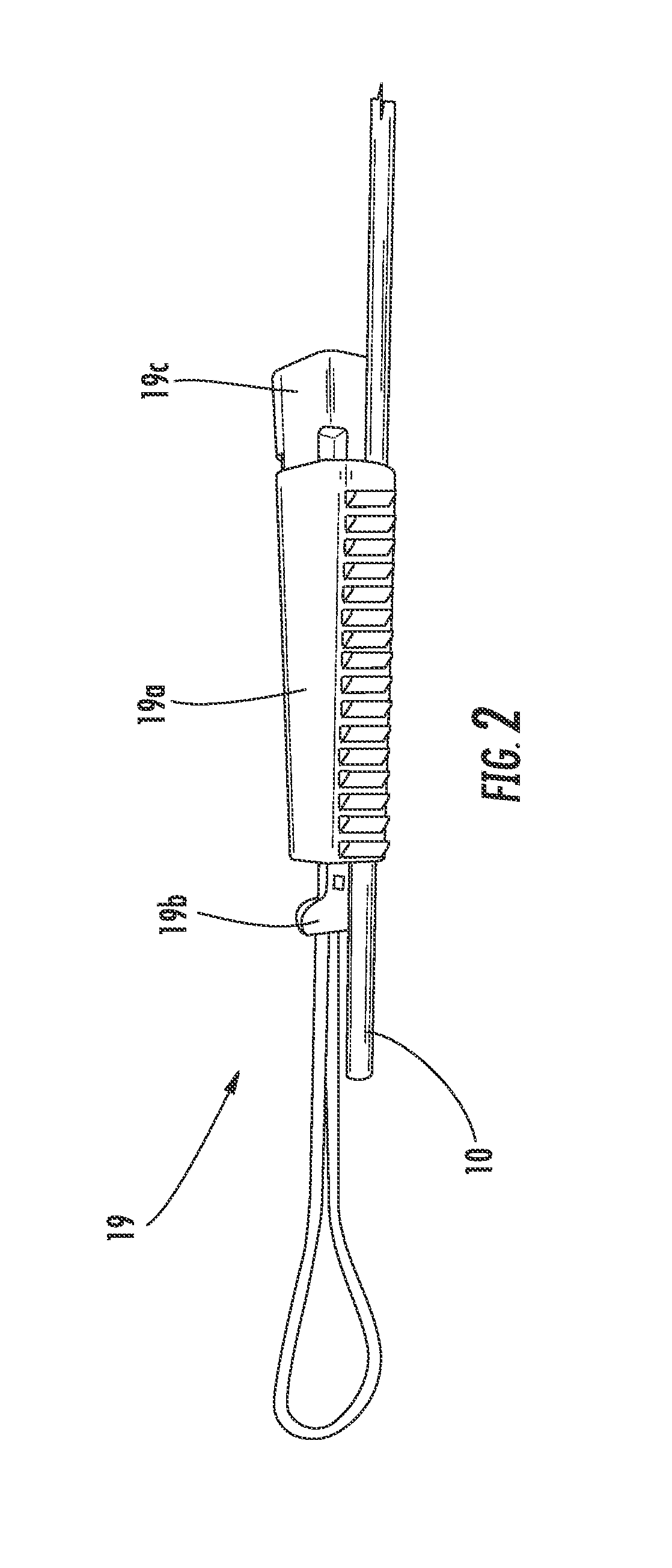Fiber optic cables and assemblies for fiber toward the subscriber applications
- Summary
- Abstract
- Description
- Claims
- Application Information
AI Technical Summary
Benefits of technology
Problems solved by technology
Method used
Image
Examples
example 1
[0106]A fiber optic cable 610 as illustrated in FIG. 20 has a height of 3 millimeters, a width W of 5.3 millimeters, a separation distance S1 of 2.3 millimeters, strength components 630 each with a radius R1 of 0.625 millimeters, a medial height MH of 2.5 millimeters, an end height EH of 3 millimeters, and a height ratio MH / EH of 0.833. The cable jacket 640 is constructed from MDPE (Medium Density Polyethylene), the strength components 630 are constructed from GRP (Glass Reinforced Plastic), the adhesion promoter 654 is EAA (Ethylene Acrylic Acid), and the optical fiber 620 has a diameter of 0.255 mm (including a 0.01 mm color coating).
[0107]According to another aspect of the present embodiment, the small cross-sectional footprint of fiber optic cable 610 allows for a smaller coil diameter compared with conventional fiber optic cables. Consequently, relatively long lengths of the fiber optic cable 610 can be stored in a relatively small volume. For example, the volume occupied in co...
example 2
[0115]A toneable fiber optic cable 810 as illustrated in FIG. 24 has a height of 3 millimeters, a main body 878 width of about 5.4 millimeters, an overall with W of 6.6 mm, a separation distance between strength components centerlines of 2.3 millimeters, strength components 630 each with a radius R1 of 0.625 millimeters, a medial height MH of 2.5 millimeters, an end height EH of 3 millimeters, a height ratio MH / EH of 0.833, and a minimum neck thickness T2 of about 0.6 millimeters. The cable jacket 840 is constructed from MDPE, the strength components 830 are constructed from GRP, the adhesion promoter 654 is EAA, and the optical fiber 820 has a diameter of 0.255 mm (including a 0.01 mm color coating layer). The jacket area AJ, excluding the toneable lobe, is about 10 millimeters squared.
[0116]The optical cables constructed according to the present embodiments can be constructed to have additional desirable properties. For example, the jacket materials may be extruded such that the c...
PUM
 Login to View More
Login to View More Abstract
Description
Claims
Application Information
 Login to View More
Login to View More - R&D
- Intellectual Property
- Life Sciences
- Materials
- Tech Scout
- Unparalleled Data Quality
- Higher Quality Content
- 60% Fewer Hallucinations
Browse by: Latest US Patents, China's latest patents, Technical Efficacy Thesaurus, Application Domain, Technology Topic, Popular Technical Reports.
© 2025 PatSnap. All rights reserved.Legal|Privacy policy|Modern Slavery Act Transparency Statement|Sitemap|About US| Contact US: help@patsnap.com



